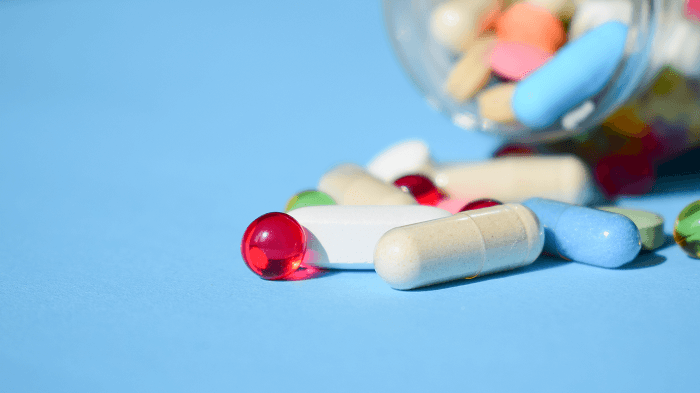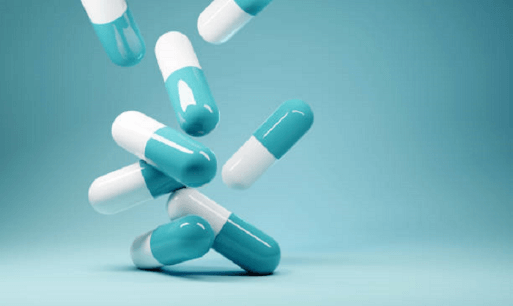Tablets DefinitionA tablet is a solid dosage form of medicine that contains a pre-measured amount of active ingredients. It is a compressed medication made up of various ingredients, such as binders, fillers, lubricants, colourings, and flavourings. The active ingredients are mixed with other ingredients to bind them together and form a tablet, which is then compressed into a desired shape. Tablets are typically made in various shapes and sizes and are designed to be swallowed whole. Tablets must be manufactured to the highest possible standards to ensure they are safe and effective. This includes ensuring that all ingredients are correctly weighed, mixed, and formed into the desired shape and size. Quality control measures are also taken to ensure that the tablets meet the required strength, purity, and quality standards. 
History of TabletsThe history of tablet medicine can be traced back to ancient Egypt, where tablets were used to treat various ailments. In ancient Greece, tablets were used to make herbal and mineral medicines, while in the middle Ages, they were used to treat various illnesses and ailments. In the Renaissance, tablets were used to treat diseases such as plague and cholera. In the 19th century, tablet medicine became more widespread and was used to treat various conditions, including fever and stomach ailments. During this time, the production of tablet medicine was also perfected, with technological advances allowing for the production of tablets in mass quantities. Today, tablet medicine treats various conditions, from headache and muscle pain to HIV/AIDS and cancer. Tablet medicine is also used for lifestyle applications such as weight loss, quitting smoking, and improving sleep. Technology advancements have allowed for the development of new types of tablet medicine, including time-release tablets, sublingual tablets, and chewable tablets. Types of TabletsThere are several different types of tablets, including:
Property of Tablets

Manufacturing of TabletsThe manufacturing process for tablets involves several steps. First, the active and other ingredients are weighed and mixed in a large container. The mixture is then compressed into the desired shape and size, and the tablets are cut. The tablets are then polished and inspected for quality. Finally, the tablets are packed for distribution. Quality control measures are taken throughout the manufacturing process to ensure that the tablets meet the required standards for strength, purity, and overall quality. Tabletting FormulationsTabletting formulations typically include various ingredients, such as binders, fillers, lubricants, colourings, and flavourings. The active ingredient is usually mixed with various other ingredients to bind them together and form a tablet. The ingredients used in the formulation of a tablet vary depending on the type of tablet, such as immediate release, controlled release, or delayed release, as well as the desired release rate. Common ingredients used in tablet formulations include microcrystalline cellulose, lactose, corn starch, magnesium stearate, and sodium lauryl sulfate. Advantages of Tablets
In conclusion, tablets offer several advantages over other dosage forms. They are easy to store, transport, dispense and provide consistent and accurate doses. They also offer convenience and can be taken anywhere, with or without food or liquids. Disadvantages of Tablets
In conclusion, tablets have several disadvantages. They are typically more expensive than other dosage forms and can be difficult to swallow. In addition, tablets can be difficult to divide into smaller doses and can be affected by environmental conditions. Finally, tablets can be difficult to control, as they can be affected by changes in the body or food or liquid in the stomach. Is There Any Difference Between Tablets and Pills?Yes, there is a difference between tablets and pills. Tablets are solid dosage forms consisting of a mixture of an active ingredient and other excipients, such as binders, fillers, and disintegrates. Tablets can be either coated or uncoated. Pills, however, are smaller and contain only the active ingredient. They are usually round, oblong, or capsule-shaped. Pills are easier to swallow than tablets and are often used for medications that need to be absorbed quickly. How Tablets works?Tablets release the active ingredient or ingredients into the body over time. The active ingredient is released by the tablet's disintegrating agents, which break down the tablet into tiny particles that the body can absorb. This slow release of the active ingredient helps to maintain a consistent level of the drug in the body, allowing it to be effective. How Do Pills Work?Pills deliver a drug to the body that can be easily and quickly absorbed. When the pill is swallowed, it is broken down in the stomach and absorbed into the bloodstream. The drug then travels throughout the body and binds to certain receptors, resulting in the desired effect. Depending on the type of pill and the drug it contains, the effects can vary from reducing pain and inflammation to treating a wide range of illnesses. Overall, tablets are an essential form of medication, offering several advantages over other dosage forms. They are easy to store, transport, and dispense and provide consistent and accurate doses. In addition, they must be manufactured to the highest possible standards to ensure they are safe and effective.
Next TopicTissue Definition
|
 For Videos Join Our Youtube Channel: Join Now
For Videos Join Our Youtube Channel: Join Now
Feedback
- Send your Feedback to [email protected]
Help Others, Please Share









